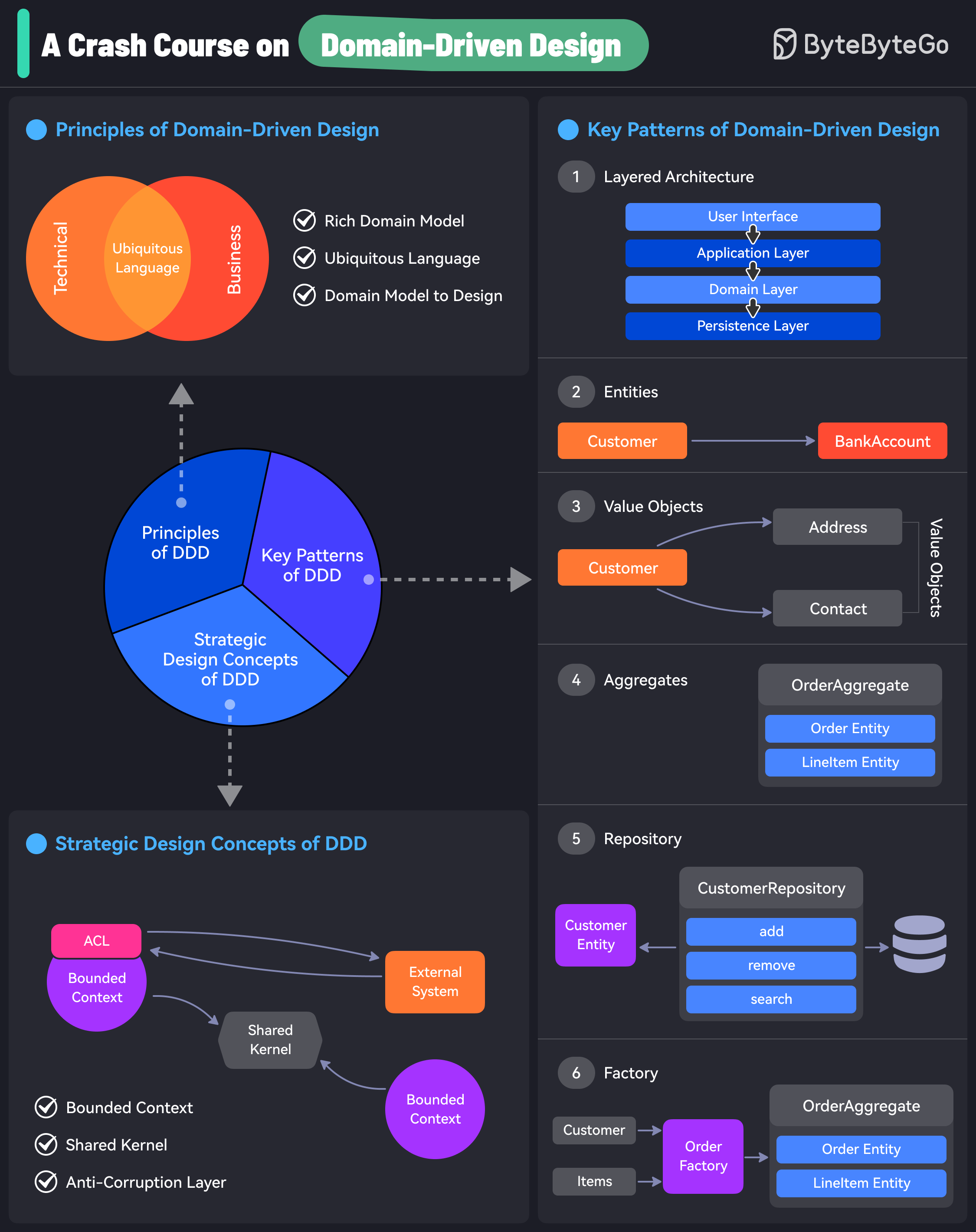Domain Driven Design

Developing software for complex domains is a challenging task.
As the complexity of the problem domain grows, it becomes increasingly difficult to create software that accurately represents the business concepts, rules, and processes. Poorly designed software can quickly turn into an incomprehensible tangle of code that is difficult to understand, maintain, and extend.
Domain-Driven Design (DDD) offers a solution to this problem.
DDD is an approach to software development that tackles domain complexity by emphasizing the importance of modeling the core domain and business logic and using those models as the foundation for software design.
At its heart, Domain-Driven Design is about:
- Placing the primary focus on the core domain.
- Basing complex designs on a model of the domain
- Building collaboration between technical and domain experts.
The need for Domain-Driven Design has become more pressing in recent years. Architectures based on microservices and cloud computing have resulted in systems composed of numerous small components that interact in intricate ways. Without a clear and well-defined model of the domain guiding their design, such systems can quickly become a “big ball of mud”.
In this article, we’ll understand the basics of Domain-Driven Design and its key concepts that can help us build more maintainable and extensible systems that are aligned with the core domain and business logic.